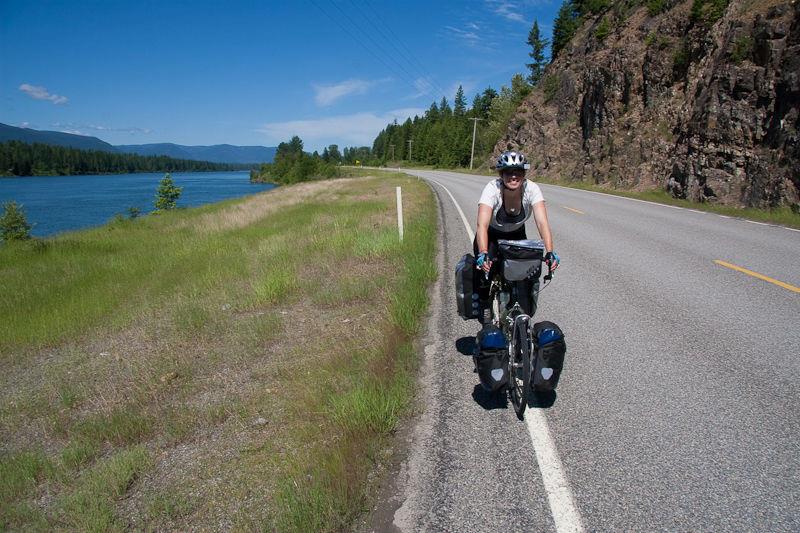Ride. Sleep. Repeat

Bicycle touring is the simple act of riding your bicycle for days on end from one location to the next. Think of it as a series of day rides where you carry gear on your bike.
Carrying luggage/gear
How much gear you need to take will vary greatly depending on your route, season and climate, whether you intend to stay in hotels or camp, and your personal preference. The general rule is to take as little as you can, and like backpacking, there are many ways to lighten your load. The one major advantage of bicycle touring over backpacking is that the weight of your gear is carried on the bike frame, not your back! This means that you’ll feel less stress on your bones and joints at the end of the day.
Options for carrying gear:
- Panniers (saddlebags) & Racks
- Bikepacking bags
- Trailer
- Backpack
Choosing a Touring Bicycle
You don’t need to spend thousands to go on a big tour. It’s often best to get started on the big you own, adapt it for touring, and then upgrade your bike and equipment as you gain experience and push your touring limits. Many bicycle travelers do prefer a bike that is designed for touring.
Touring bikes are usually:
- SOLID: stronger/tougher/more durable frames/forks (usually steel), built with stronger wheels (36 spokes), puncture-resistant tires
- VERSATILE: options to put wider tires for a more comfortable ride with better grip on rough surfaces, many braze-ons/bosses for bolting on frames, fenders, water bottle cages, accessories, simple components for easier repair in remote places
- COMFORTABLE: more upright position compared to road bikes, longer wheelbase to keep your heel from touching your saddlebags, comfortable seat for riding days on end. Make sure the bike fits you as perfectly as possible!
Read more on choosing a touring bike for more details.
Bike repair/maintenance
It’s important to gain a basic understanding of bicycle maintenance and simple repairs before setting out on your tour. The most important items are how to change a flat tire, adjust brake and shifter cables, replace brake pads, and keep your chain and components well lubricated. If your tour is less than a few weeks, you can get by with a more basic multitool and repair kit. It’s always wise to have a trained bicycle mechanic take a look at your full setup before starting out.
For longer or more remote tours, it’s wise to know how to repair a chain, fix a broken spoke, and rebuild your drivetrain and braking systems.
See our recommendations on bicycle maintenance for ways to improve your skills and confidence before heading out.
Safety/traffic
Risks are always managed, never eliminated, so be sure to do what you can to stay safe on the road. Wearing bright, reflective clothing will make a huge difference, as well as maintaining discipline by wearing an helmet, signaling turns, not riding too far from the edge of the road, and keeping your bike running properly with regular maintenance. Read more on our Bike Safety and Security page.
Budgeting
Thankfully bicycle touring can be one of the most inexpensive ways to travel. You provide your own transportation, and usually have the option of camping and cooking your own meals. Touring on any budget is possible, and some prefer to “credit card tour,” taking only minimal gear and staying overnight in hotels and eating in restaurants. Long-term bicycle trips usually lend themselves to budget-friendly travel, and can make a more expensive destination affordable.
Read more about common beginner mistakes for bike touring.




